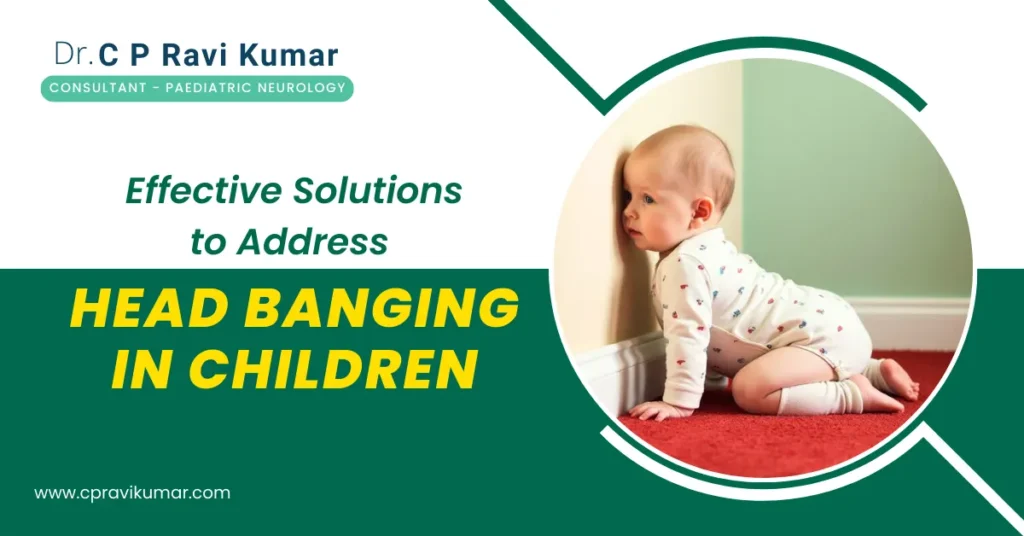
Sleep-related movements, such as headbanging, are relatively common behaviors observed in young children. These repetitive actions often raise concern among parents, but in many cases, they are part of normal childhood development. While some children may engage in these behaviors to self-soothe or during sleep transitions, others might do so as a response to stress or discomfort.
Many infants and young children engage in rhythmic behaviors, such as body rocking, sucking, and head banging, to help themselves calm down and fall asleep. These behaviors are thought to serve as replacements for soothing actions typically provided by parents, like rocking or tapping the child’s back. However, in some cases, these behaviors can become very intense, causing concern for parents who fear the child might harm themselves, particularly with intense head banging.
In most instances, these rhythmic behaviors are considered beneficial, so it is generally advised not to interfere with them. As the child grows, these behaviors typically fade away on their own. If the behaviors are particularly intense and concerning, parents are usually instructed to protect the child from injury, such as by placing a soft surface to cushion the head during head banging.
There are no specific clinical treatments, However, these behaviors are often addressed by helping parents explore and implement alternative soothing strategies for the child.
Headbanging involves the rhythmic motion of the head, often forcefully banging it against a surface, and is most commonly seen during the toddler and preschool years.
Headbanging are often harmless and tend to resolve with age, they can sometimes signal underlying issues, such as sensory processing difficulties, anxiety, or sleep disorders. Understanding the causes, triggers, and potential impacts of these sleep-related movements is crucial for parents and caregivers to determine when intervention might be needed.
Watching a child engage in head banging can be distressing for parents. However, in most instances, occasional head banging is simply a way for children to self-soothe, self-stimulate, or release frustration, and it doesn’t typically indicate a deeper issue.
If your child is engaging in head banging, focus on addressing the emotional triggers and minimizing the risk of injury. Avoid making a big fuss over the behavior.
Up to 20 percent of Babies and toddlers intentionally bang their heads. Boys are more prone to this behavior than girls, although the reason for this difference is not well understood.
Head banging in toddlers can be unsettling for parents, but it is often a normal part of development. It’s important to understand the underlying reasons for this behavior, as they can vary. Here’s a breakdown of the potential causes:
- Self-comfort: Many toddlers use head banging as a way to self-soothe. The rhythmic motion helps them relax, especially when they’re tired, falling asleep, or in a half-awake state during the night. This behavior usually decreases as the child grows older and develops other coping mechanisms.
- Pain relief: When toddlers experience physical discomfort—such as from ear infections or teething—they may bang their heads to distract themselves or alleviate pain. If this behavior coincides with signs of illness, such as fever or irritability, it’s worth checking for any underlying medical issues.
- Frustration: As toddlers are still learning to communicate effectively, they may use head banging to express frustration, especially when they can’t get their needs met. This could happen during temper tantrums or in response to not being able to express themselves verbally.
- Need for attention: Toddlers are keen observers and may realize that head banging gets a strong response from caregivers. If this behavior is met with concern or intervention, the toddler might repeat it to get attention, even if it’s negative.
- Developmental concerns: In some cases, head banging can be linked to developmental issues such as autism spectrum disorder. However, it’s important to note that head banging alone isn’t a definitive sign of a developmental disorder. It’s crucial to look for other symptoms, such as social or communication challenges, to understand whether there may be a broader concern.
If you’re concerned about your toddler’s head banging, especially if it’s frequent, intense, or associated with other unusual behaviors, consulting a pediatrician or child development expert is a good step.
“Effective Solutions for Addressing Head Banging in Children”
When you notice your toddler engaging in head banging, there are several strategies you can try:
- Offer positive attention: It’s important to provide your toddler with plenty of positive attention, but not when they’re banging their head. If you suspect they’re doing it for attention, avoid making a big reaction, as this could reinforce the behavior and make them more likely to continue.
- Avoid harsh reactions: Since toddlers are still developing emotionally and cognitively, it’s crucial not to yell or scold them for banging head. They are too young to fully grasp the situation or understand a reprimand.
- Ensure safety: Check your toddler’s crib to ensure there are no loose screws or bolts that could cause harm during head banging. Consider placing a blanket or quilt between the crib and the wall to minimize noise and prevent any potential injury.
- Avoid choking hazards: Don’t place pillows or thick blankets in the crib, as these could pose a choking risk. If you want to use crib bumpers to cushion the impact, ensure they are thin, firm, and securely attached to the crib rails.
